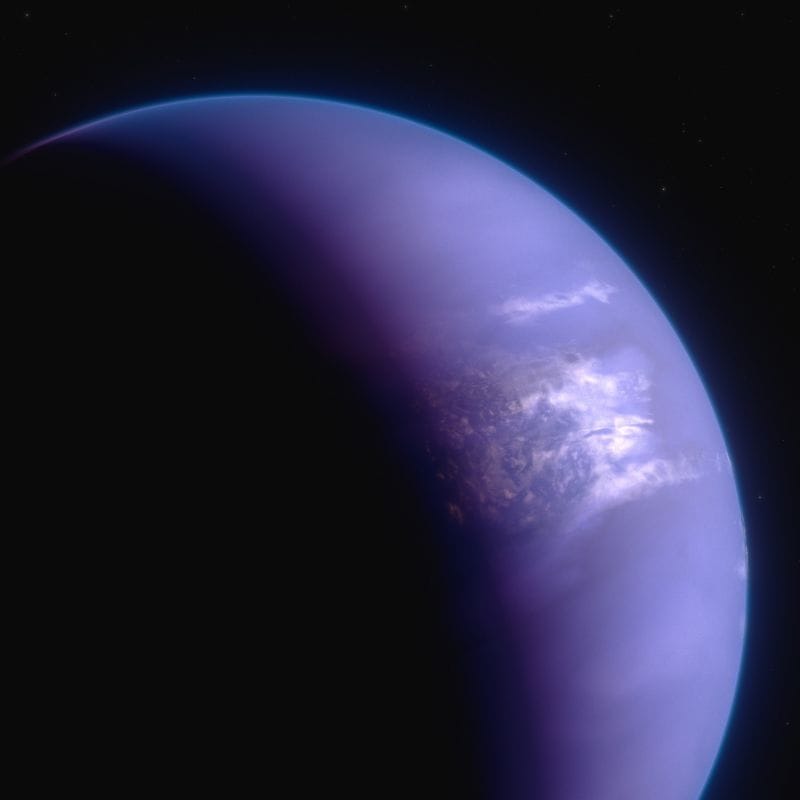Scientists uncover the climate of a planet 280 light-years away
An international team of researchers has mapped the weather – including temperature, cloud cover and winds – on an exoplanet that is roughly 280 light-years from Earth.

First published by the University of Newcastle
An international team of researchers has mapped the weather – including temperature, cloud cover and winds – on an exoplanet that is roughly 280 light-years from Earth.
Exoplanets are planets that are located beyond our solar system. The focus of this study was exoplanet WASP-43 b, which is a ‘hot Jupiter' type of exoplanet: similar in size to Jupiter, made primarily of hydrogen and helium, and much hotter than any of the giant planets in our own solar system.
Co-author of the study published in Nature Astronomy, Dr Tom Evans-Soma, from the University of Newcastle is a member of an international team that has been analysing some of the first data returned by NASA’s new flagship observatory, the James Webb Space Telescope.
From these latest observations, the team gleaned that dayside on exoplanet WASP-43 b boasts clear skies with an average temperature of nearly 1,250 degrees Celsius – almost hot enough to forge iron. Meanwhile, the nightside is significantly cooler at 600 degrees Celsius with thick, high cloud coverage.
The data revealed a surprising lack of methane anywhere in the atmosphere, a clue which suggests to scientists that the exoplanet has high wind speeds upwards of 8,000 kilometres per hour – at wind speed this high there isn’t enough time for the expected chemical reactions to produce detectable amounts of methane.
The investigation is the latest demonstration of the exoplanet science that is now possible with the James Webb Space Telescope’s unprecedented ability to measure temperature variations and detect atmospheric gases trillions of kilometres away.
Astronomer Dr Evans-Soma, who helped analyse the data to uncover new insights about the exoplanet WASP-43 b, is currently leading further James Webb Space Telescope observations to learn more about other exoplanets.




